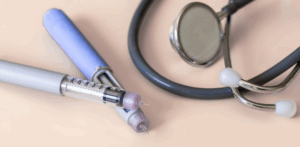October brings more than falling leaves, ghosts, and ghouls. It’s Breast Cancer Awareness Month, making it the perfect time to talk about something that could save your life: knowing your body and recognizing when something’s off.
Scary Stats, Positive Outlook
In the United States, about “13% of [women] will experience cancer in their lifetime, which is a crazy number,” says Dr. Stewart Decker, clinical wellness officer and medical director at Sky Lakes Wellness Center. “So [of] eight friends, one of you is likely to get breast cancer at some point.”
That statistic might sound scary, but there’s positive news: Breast cancer is highly treatable when caught early. According to the American Cancer Society, the 5-year survival rate for breast cancer caught in its earliest stage is 99%.
It is “very, very easy to treat when you catch it really early,” Decker notes. “Like it’s just kind of a melon baller type, easy diagnosis, easy treatment. Whereas if you catch it really late, it can be pretty challenging because the breasts are very lymphatic tissues.”
When to Start Screening
Decker says most women should begin regular mammograms at age 40. But family history changes that recommendation. “If you have breast cancer in a first-degree relative who is young, so let’s say your mother or your sister develops breast cancer at age 45, that means that you should start your screening at age 35,” Dr. Decker explains. “So 10 years before your family member was diagnosed.”
The frequency matters, too. “If you have any breast cancer anywhere in your family, you should definitely get screened every year. And if you don’t have any breast cancer anywhere in your family, then you can probably get away with every other year,” he advises.
Beyond Genetics
While family history plays a major role, lifestyle is also a factor. Pregnancy and breastfeeding can reduce your risk. Early menstruation and late menopause can slightly increase risk. “Alcohol consumption, tobacco consumption — those are factors also,” Dr. Decker confirms.
Know What to Look For
Breast self-awareness means knowing how your breasts normally look and feel. This helps you notice any changes that might need attention. You don’t need special training — just familiarity with your own body. You can do this with a monthly self-check.
“The really worrisome things are very, very hard, like a marble and things that kind of feel stuck in place,” Dr. Decker says. “Like you can’t move them that easily. They’re stuck to the tissues around them.”
But self-exams aren’t just about finding lumps. During your monthly check, look for anything new or different, such as:
- Areas of thickness, changes in breast size or shape
- Skin changes like dimpling or puckering
- Nipple discharge or changes in nipple direction
- Swelling, warmth, or redness
Take Care of Yourself Now
Regular screening saves lives. Whether it’s your annual mammogram or simply staying familiar with how your breasts normally look and feel, you’re taking control of your health.
“It’s one of the most important screenings to get. It’s just a common diagnosis,” Dr. Decker emphasizes. The key is making it routine — and not putting it off.
So schedule that mammogram, do your self-exam, and remember: Early detection can be the difference between a small scare and a life-threatening diagnosis.
You can self schedule a mammogram with MyChart
Schedule your mammogram on MyChart or talk to your primary care provider.







